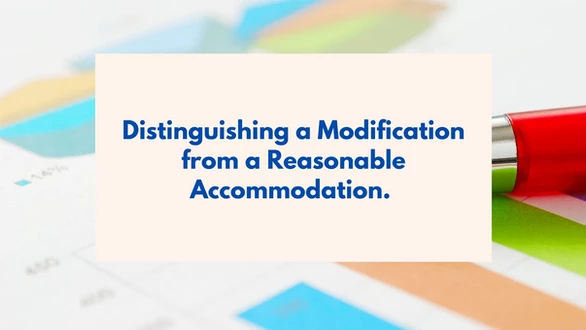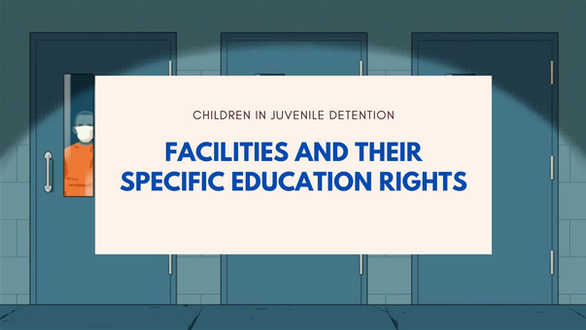INTRODUCTION
Children with special needs or disabilities—such as physical, developmental, intellectual, emotional, and sensory disabilities—are at an increased risk of being bullied. Any number of factors— physical vulnerability, social skill challenges, or intolerant environments—may increase the risk.
In schools and even online, bullying has become a serious problem. According to the American Academy of Child and Adolescent Psychiatry, 50% of children are bullied and l0% are victims of bullying on a regular basis. Bullying has the potential to cause real and lasting harm to victims. In the short-term, bullying can cause missed days of school and poor academic performance, low self-esteem, social isolation, and physical injury.
Over the long-term, bullying makes a child more likely to develop chronic low self-esteem, mental illnesses like depression or anxiety disorders, substance use disorders and addiction, and even suicidal thoughts and behaviors.
Obviously, parents and schools need to be aware of these risks and be prepared to help their children develop the self-confidence needed to overcome the ridicule of bullies. The purpose of this article is to raise awareness about bullying and promote effective prevention efforts in schools and communities. But before we dive in proper, let’s examine what bullying is.
WHAT IS BULLYING?
Bullying is aggressive behavior that is intentional and that involves an imbalance of power or strength. Often it is repeated over time. Bullying is not the same thing as conflict. Conflict involves antagonism among two or more people. Any two people can have a conflict (or a disagreement or a fight), but bullying only occurs where there is a power imbalance. Bullying can take many forms. Direct bullying can involve hitting, kicking, shoving, spitting, taunting, teasing, racial slurs, verbal harassment, threatening, and obscene gestures. Indirect bullying can involve getting another person to bully someone for you, spreading rumors, deliberately excluding someone from a group, and cyberbullying.
Children who are bullied are more likely than their peers to be depressed; anxious; have low self-esteem; suffer from headaches, stomach aches, and fatigue; be apprehensive about going to school; and think of suicide.
One group that is particularly vulnerable is children with special needs or disabilities.
What is disability harassment?
Department of Education Office of Civil Rights has stated that disability harassment is conduct that creates a hostile environment which limits people with disabilities from participating in or benefiting from school activities or services.
Harassment can be physical or verbal abuse and intimidation. Disability harassment, unlike bullying, may also include conduct that is not directed at a specific target, is not motivated by intent to cause harm, and involves isolated incidents. However, bullying can be disability harassment if the bullying is on the basis of disability and/or targets people with disabilities. Disability harassment can be perpetrated by students and peers, and even by school employees, such as teachers and administrators.
THE DIFFERENCE BETWEEN DISABILITY HARASSMENT AND BULLYING A CHILD WITH A DISABILITY
Bullying and harassment are terms that are used interchangeably by many people, with bullying often regarded as a type of harassment. In fact The Office for Civil Rights (OCR) and the Department of Justice (DOJ) have stated that bullying may also be considered harassment when it is based on a student’s race, color, national origin, sex, disability, or religion
.
There are, however, some notable differences, which are particularly important to bear in mind if you are drawing up an anti-bullying policy. So let’s examine what the main differences are.
Harassment v Bullying
An examination of the differences between harassment and bullying will help to isolate those qualities unique to bullying which every parent should be aware of.


As the above comparison shows, people who bully and those who are guilty of harassing others, tend to operate in different ways. Bullies are often devious, operating out of sight of witnesses, and engaging methods which, when viewed in isolation, can seem fairly harmless. A pattern of behavior will usually have to be identified in order to prove that bullying has occurred.
ANTI-BULLYING LAWS
The federal government’s anti-bullying website defines bullying as “unwanted, aggressive behavior among school aged children that involve a real or perceived power imbalance.” Making threats, spreading rumors, physically or verbally attacking someone, and deliberately excluding another person from a group all constitute bullying.
As of April 2012, every state in the nation, with the exception of Montana, had passed anti-bullying legislation. Using an interactive map at the StopBullying website, you can research your own state’s laws and policies and find out more about the 11 key components of state anti-bullying legislation, including specification of prohibited conduct, development and implementation of local education agency policies, and training and preventive education.
The website also includes guidance prepared especially for kids, including “Facts about Bullying,” “What You Can Do,” and more than a dozen “webisodes” (cartoons that portray bullying situations and show kids how to address bullying) with accompanying quizzes.
THE RESPONSIBILITIES OF SCHOOLS IN STOPPING BULLYING
Bullying, teasing, and harassment should not be considered normal rites of passage or “kids just being kids”. When bullying is directed at a child because of his or her established disability and it creates a hostile environment at school, bullying behavior may cross the line and become “disability harassment.” Under Section 504 of the Rehabilitation Act of 1973 and Title II of the Americans with Disabilities Act of 1990, the school must address the harassment. Schools must also take some responsibility for bullying, especially since much of the behavior occurs during the school day.
PREVENTING BULLYING AT SCHOOL
Employing some strategies to address student’s special needs at school can help to prevent bullying and have positive outcomes for all students, especially tactics that use a team approach, foster peer relationships, and help students develop empathy. Some strategies include:
- Engaging students in developing high-interest activities in which everyone has a role to play in designing, executing or participating in the activity.
- Providing general up-front information to peers about the kinds of support children with special needs require, and have adults facilitate peer support.
- Creating a buddy system for children with special needs.
- Involving students in adaptive strategies in the classroom so that they participate in assisting and understanding the needs of others.
- Conducting team-based learning activities and rotate student groupings.
- Implementing social-emotional learning activities.
- Rewarding positive, helpful, inclusive behavior.
CONCLUSION
Bullying among children is a serious issue for a lot of children, but disabled children are more vulnerable than others. They are more likely to be targeted and less able to fight back when they are. The long-term consequences of being bullied may even be more serious and likely for these children. These are facts that all parents of disabled children need to know so that they can take steps to protect them and to insist that schools take a stronger stance against bullying.











